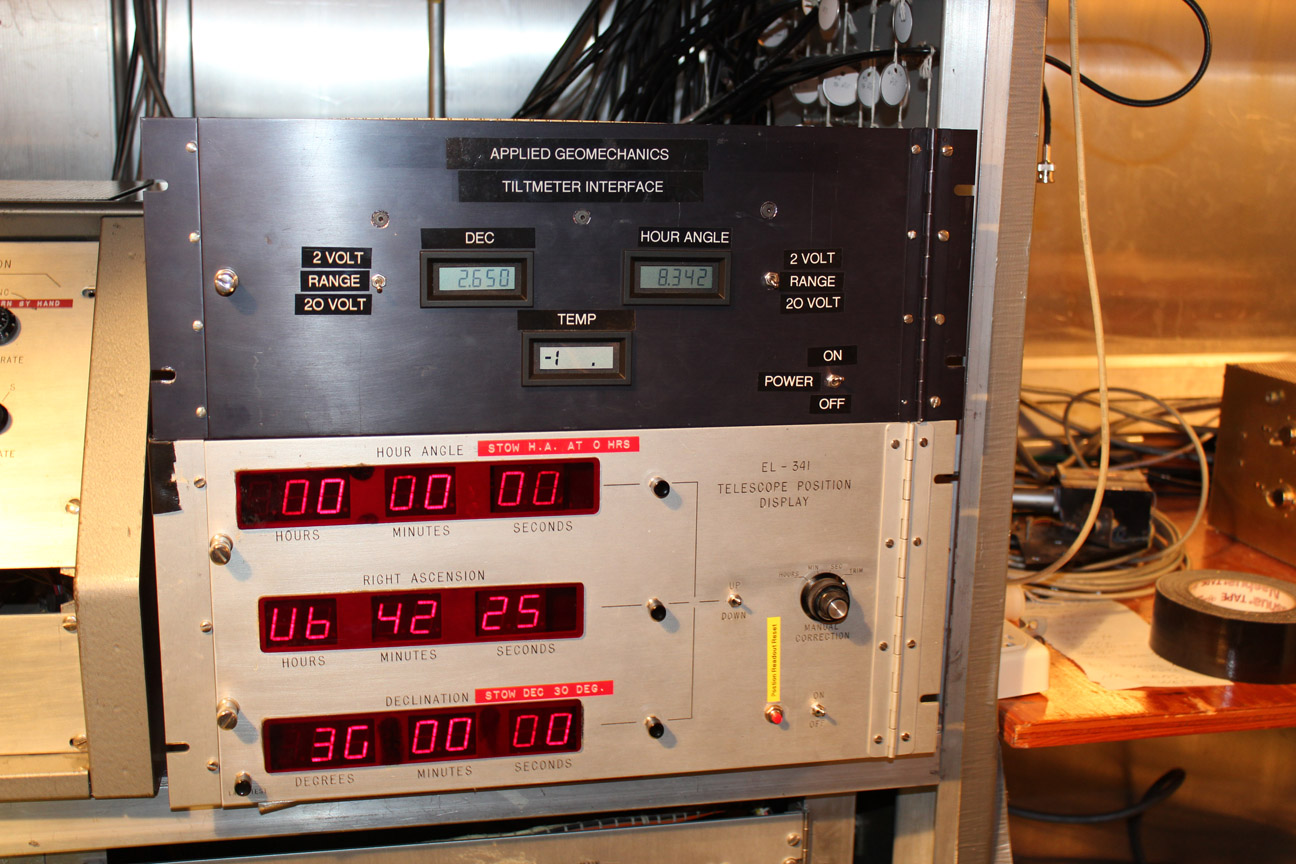Bore Sighting
Under Construction... For now please see your friendly SA. Below is a work in progress. It is not complete nor has it been double checked so again if you have questions see the SA.Bore Sighting the CAT telescope at the begining of the night saves considerable time over the course of the night. First you need to select a bight star (brighter than 4th magnitude) near zenith. It is best to use a binary with a seperation greater than four arcseconds and less than 120 arcseconds. Using a binary will be easy to identify. If you cannot find this first star then it may be necessary to level the siderostat mirror. Once this star is found precess the coordinates one final time and write them down.
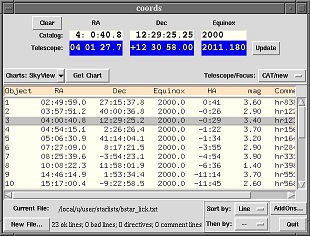
CAT Coords Program
Then go into the slit room and find the cat electronics rack on the south side of the room (above where you opened the CAT).
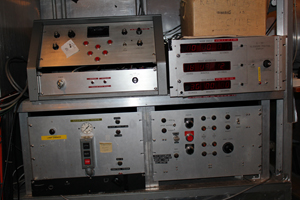
CAT Electronics
Next turn on the display of the CAT coordinates. This display is the master display. The display in the read out room is slaved to this display. Adjust the coordinates to the precessed coordinates that you wrote down. Select your hours, minutes or seconds for RA and DEC by the dial on the right. The switch between the display and the dial will determine if you count up or down. Pushing the button next to the display will change the display from what you selected with the dial and switch.
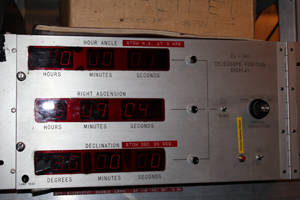
Master Coordinate Display
You are done. Now turn the display coordinates back off before you leave.
Leveling the siderostat
If you have zero luck finding a star and are desperate you will need to "level" the sideostat. This is done by using sensitive biaxial tilt sensor mounted to the siderostat. The output displays are located in the slit room above to the CAT coordinate display labled Tiltmeter. The range of tilt measured by the sensors is quite small (~ 1 degree) so you must first get the siderostat mirror close to level by slewing the siderostat to an hour angle of 00:00:00 and a declination of -15:20:00. The output voltage from the sensors span a range of about +/- 9 V. Slew the telescope back and forth in one axis using the push button controller until you get as close to zero volts as possible (using the 20V setting should get you into fat cat) and then do the same in the other axis. If this fails to get you close then go back to HA=0 and Dec =-15:20:00 and check the bubble level.
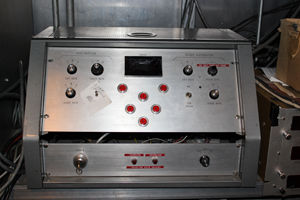
Push Button Controller
You may have to go back and readjust the other axis. Once both axes are close to zero volts then reset the CAT coordinate display to read HA = 00:00:00 and DEC = -15:20:00. Then set the RA display to equal the current LST.
If you have zero luck finding a star and are desperate you will need to "level" the sideostat. This is done by using sensitive biaxial tilt sensor mounted to the siderostat. The output displays are located in the slit room above to the CAT coordinate display labled Tiltmeter Interface. The range of tilt measured by the sensors is quite small (~ 1 degree) so you must first get the siderostat mirror close to level by slewing the siderostat to an hour angle of 00:00:00 and a declination of -15:20:00. Then go out to the CAT shed and plug in the cable to the tiltmeter. As long as you are out there it is a good idea to check the bubble level too.
Bubble Level and Tiltmeter Controller
Slew the telescope back and forth in one axis using the push button controller until you get as close to zero volts as possible. The output voltage from the sensors span a range of about +/- 9 V, so +/-8.5 is max. Then do the same in the other axis (using the 20V setting should get you into fat cat). Once zeroed then set the master coords panel to the new correct position of HA=0 and Dec =-15:20:00.
If this fails to get you close then go back to HA=0 and Dec =-15:20:00 and recheck the bubble level.
Tilt Meter
New users please note: The CAT is an observer-operated telescope. All new users must be checked out by a resident astronomer on their first night. Retrurning observers may request a refresher. Please make requests for support on your time application. Direct questions to the Support Astronomers, sa@ucolick.org.
Last modified: Sun Oct 2 18:36:17 PDT 2016

